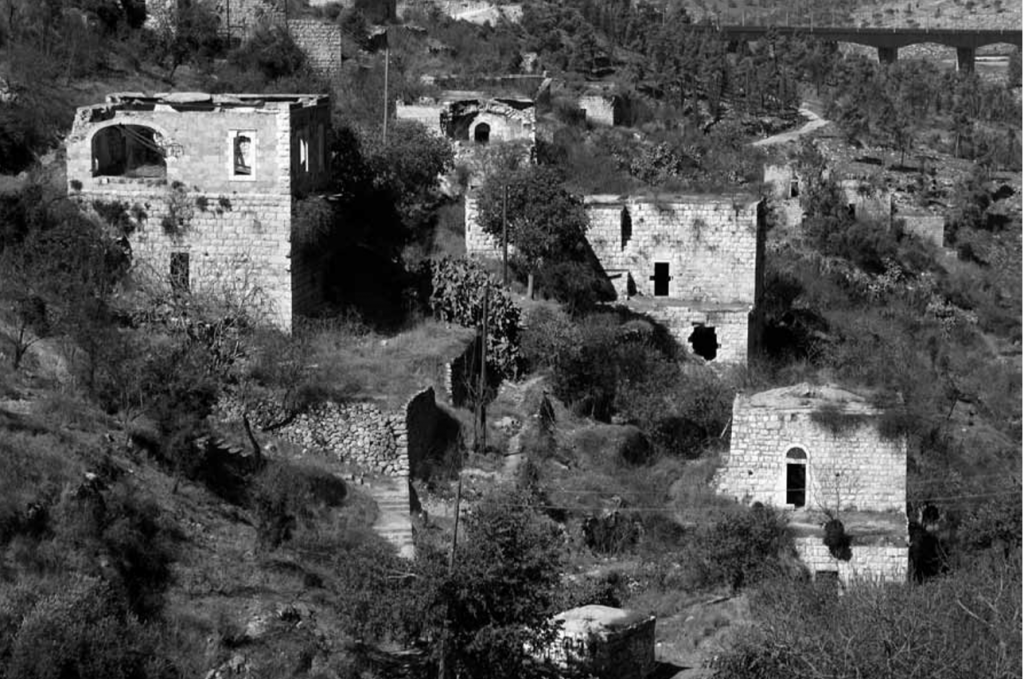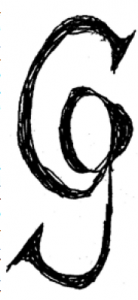In 1947 my grandmother, Mamo, was 14 years old. She was in high school, in Whittier, California. 85,331 people lived in Whittier. Mamo had slumber parties with her best friends and rode her bike everywhere. She went to parties on the beach and rode horses in the hills. She worked at a little corner grocery store stocking shelves. That is the same store where she met my grandpa, papa.
In 1947, 2,550 Palestinians lived in the town of Lifta. There were coffeehouses, shops, an elementary school, and a social club. Lifta was a suburb of Jerusalem. In 1947 the Haganah (Jewish paramilitary organization during the British Mandate) targeted Lifta and surrounding towns. In December of 1947, Mamo and her family were preparing for Christmas. She was working in the corner store stocking shelves. She was hanging out with her friends. Practicing the piano and taking dance classes.

In December of 1947, six Palestinians were killed and seven injured in a shooting at one of the coffeehouses in Lifta. Following the shooting, Lifta was terrorized by house raids, home demolition, and the bombing of the Mukhtar’s house (the community leader). By the end of 1948, Lifta was effectively depopulated of Palestinians. David Ben-Gurion said about Lifta: “There are no strangers one hundred percent Jews.”
I am able to visit Lifta, but Palestinians of Lifta are not able to come home
In 1948, Mamo was 15 years old. She lived with her family on Gregory Street in Whittier, California. She played in the streets with her friends, riding her bike and having slumber parties. She worked in the store where she met my papa.
70 years later, 2018, I had the privilege to visit Lifta. We visited with guide Umar Al-Ghubari of Zochrot (Remembering). He opened the tour by showing the group a map of the 600 plus Palestinian villages, towns and localities ethnically cleansed during the Nakba (The Catastrophe) and subsequent years. He shared: “one goal of Zochrot is to see the unseen and to remember the Nakba.”
As we followed Umar down the road, we passed a sign from Israeli Nature Reserves Authority. They plan to restore the “long-abandoned village “and turn it into an open-air natural history and study center that will “stress the Jewish roots of the site.”
Across the street there is a sign with the name Mei Naftoah in English and Hebrew. The word Lifta had been scratched off.
We continued the walk to the pools that are fed by the Wadi Al-Shami springs. Umar explained that Palestinians of Lifta constructed three pools, each feeding into the other. The top pool for drinking and cooking, the second for washing, and the third to water the animals. As Umar spoke a group of young settlers played and swam in the pool of water that was previously used for drinking and cooking.
As the walk continued, we passed homes that were falling down, and the building that was once a school. Umar stopped to point out the two houses on the top of Lifta that have been renovated and that Jewish settlers now live in. Buildings were covered in graffiti. In the Mosque, a Star of David was spray painted on the wall.
As we walk through Lifta, I think about Mamo who is 86. I know that she was raised on Gregory Street in Whittier, California. While she does not live there now, I am able to go there any time. The name of the town and street she played in as a kid is written in my language. Whittier can be found on any map of the United States.
I hold space to honor the history that we walk through, remembering that I am able to visit Lifta, but Palestinians of Lifta are not able to come home.
This is an eyewitness account by Whitney Faulkner, who was part of the Environmental Justice and Olive Harvest Delegation organized by Eyewitness Palestine. Whitney is Executive Director of the Rachel Corrie Foundation.

Be First to Comment